The spiritual hijrah (journey) of Cesar Esteban Grillon, a Paraguayan ambassador to Southeast Asia region who is based in Indonesia, from Christianity (Catholicism) to Islam and to ‘jihad’ to become a better Muslim and a Muslim role model.
“Jihad is striving to become a better Muslim,” said Cesar Esteban in his speech in front of Indonesian Government dignitaries including The Indonesian People’s Consultative Assembly (MPR RI) Speaker Dr. H. Zulkifli Hasan, ambassadors and Muslim Scholars at the groundbreaking ceremony of the Masjid An-Nubuwwah, Muhajirun Islamic Village, Natar, South Lampung (about 225 km to the northwest of Jakarta), Friday, November 7, 2014.
“The other ambassadors who were not present at the ceremony gave the reasons that they have a hectic schedule. But I still attend the event because this is my jihad,” says Cesar Esteban. “The construction of this mosque (Masjid An-Nubuwwah) is so important. We should provide support as this is part of jihad,” he said.
Also Read: The Forty-Four-Days of Glory: Azerbaijan’s Struggle for Justice and Peace
According to the Paraguayan ambassador, the jihad that was touted by the United States that the jihad is to kill other people or attack other countries, it is totally untrue. Because in Islam, it is explained that if you kill one person it means you kill all mankind.
(In the Name of Allah, the Beneficent, the Merciful. “Because of that We ordained for the Children of Israel that if anyone killed a person not in retaliation (in legal punishment) of murder, or (and) to spread mischief in the land – it would be as if he killed all mankind, and if anyone saved a life, it would be as if he saved the life of all mankind. And indeed, there came to them Our Messengers with clear proofs, evidence, and signs, even then after that many of them continued to exceed the limits (e.g. by doing oppression unjustly and exceeding beyond the limits set by Allâh by committing the major sins) in the land!” – Al Qur’an, Surah Al-Maidah, Verse 32.)
 “Here in Indonesia, one of the Muslim majority countries, the people are nice and friendly, that is why I do not want to be ambassador in other countries. I love the people of Indonesia,” he added.
“Here in Indonesia, one of the Muslim majority countries, the people are nice and friendly, that is why I do not want to be ambassador in other countries. I love the people of Indonesia,” he added.
A Muslim Role Model
Also Read: Palestine Solidarity Month: A Collective Movement for Al-Aqsa and Palestine’s Freedom
The spiritual hijrah has made him wanted to become a Muslim role model that would attract and inspire his fellow countrymen to learn more about Islam and finally after understanding the truth about Islam convert to this religion.
Ambassador of the Republic of Paraguay to Southeast Asia region based in Jakarta, Cesar Esteban Grillon wanted to become a role model as a Muslim for his country, a Christian majority country in South America, that will attract Paraguayans to become Muslims.
“I want to become a Muslim role model in my country that will inspire my fellow countrymen to become Muslim,” said a new Muslim convert, Cesar Esteban Grillion in an exclusive interview with Mi’raj Islamic News Agency (MINA) in his apartment Plaza Mutiara, Suit 1700 in Mega Kuningan, Jakarta, November 18, 2013.
Cesar Esteban Grillon was born in Asunción, Paraguay in 1957. He was the first Consul General of Paraguay in Miami, the United Staes. He served in this position from 1986 – 1993. He promoted his country and greatly increased the diplomatic, commercial, and cultural relationship between the United States and Paraguay.
Also Read: Hassan al-Turabi: A Controversial Thinker from Sudan
Grillon was mentioned in a South Florida Business Journal article while he was Consul General. The article states: And the country’s 31-year-old Consul General in Miami, Cesar Esteban Grillon, is receiving much credit for softening Paraguayan government policy that leaned for decades towards protectionism. “Cesar does in fact represent the new Paraguay,” says Miami attorney Margaret Kent, a member of the law firm Feinchrieber & Associates. “I think he is knocking down the doors that need to be knocked down.”
Cesar Esteban, who became the first Paraguayan official to convert to Islam, is currently the first Ambassador of Paraguay in the Southeast Asia region, based in Jakarta, Indonesia.
Last year, Cesar Estebon Grillion decided to make a hijrah from a Catholic to convert to Islam and officially became a Muslim. Muslim Endorsement of Cesar with two sentences ‘Shahadah’ (Islamic creed) pronunciation to convert to Islam is done after Friday (September 27, 2013) prayers in front of thousands of worshipers in the presence of Religious Affairs Minister Suryadharma Ali.
The Shahada pronunciation of Cesar Estebon Grillion tutored by the Istiqlal Mosque Grand Imam, KH. Ali Mustafa Yaqub. With a little haltingly Cesar pronounced shahadah in Arabic: “Ashhadu an la ilaha illa ‘llah; wa ashhadu anna Muhammadan rasulu ‘llah” (I bear witness that there is none worthy of worship except Allah and I bear witness that Muhammad PBUH is His servant and messenger) and immediately greeted “Alhamdulillah” (All praises belong to Allah), by the thousands who witnessed the converting procession in Istiqlal mosque.
“My decision to embrace Islam is not because of pressure or because I would marry a Sundanese Muslim woman from West Java, Indonesia, but it is due to the guidance of God (Allah SWT)” Cesar told an Editor of MINA in an interview.
Also Read: Who Exactly is the RSF Group Shaking Sudan?
Cesar admits it has long been interested in Islam. However during that time, he has not yet dared to express his desire to be a Muslim.
He explained, God Allah SWT has shown me a ‘hidayah’ (guidance) through a soul mate he got. That is, a Muslim from Indonesia named Yulie Setyohadi. From here he will establish Islamic study.
During the interview, in responding to some questions, he often exclaimed ‘Alhamdulillah!’, ‘Insha Allah’ and ‘Allahu Akbar!’ Answering a question whether he is comfortable with Islam, he also said: ‘Alhamdulillah!’
Cesar seriousness in entering Islam can be seen when he decided to study Islam from the great figures of Indonesian Muslims directly namely: Prof. KH. Quraish Shihab and the Grand Imam of Istiqlal Mosque, KH. Ali Mustafa Yaqub.
“I believe that everything in this world was created has a purpose. This is an important decision in my life,” said the 56-year man. He said, had been interested to know Islam since a few months ago. Quoting what President Susilo Bambang Yudhoyono said when he met him last August, after Ramadan, “Indonesia has not only been undergoing a development process through a reform, but also the transformation.”
“I’m doing the transformation myself – a spiritual ‘hijrah’ (transformation) from Catholicism to Islam. Allahu Akbar! (Allah is great!)” he exclaimed enthusiastically. He said he has studied Islam from some of the renowned Muslim figures in Indonesia such as Religious Affairs Minister Suryadharma Ali, Grand Imam of Istiqlal Mosque and Prof. Quraish Shihab. Once he felt that he understood enough, he finally decided to convert to Islam.
Also Read: The Two-State Solution (Palestine–Israel) in Historical Perspective
“This is not just a mere ceremony, or just merely a white converted to Islam. But I will do my best to become a Muslim role model at least in my country, Paraguay,” he said.
Paraguay – a Roman Catholicism majority country
Paraguay (pronounced: US /pɛərəɡwaɪ/, UK /pærəɡwaɪ/), officially the Republic of Paraguay (Spanish: República del Paraguay [reˈpuβlika ðel paɾaˈɣwaj], Guaraní: Tetã Paraguái [teˈtã paɾaˈɣwaj]), is a landlocked country in South America, bordered by Argentina to the south and southwest, Brazil to the east and northeast, and Bolivia to the northwest.
Christianity, particularly Roman Catholicism, is the dominant religion in Paraguay. According to the 2002 census, 89.9% of the population is Catholic, 6.2% is evangelical Christian, 1.1% identify with other Christian sects, and 0.6% practice indigenous religions.
Also Read: Enchanted by K-Dramas, Dragged into Slander: Time for Muslims to Rise!
A U.S. State Department report on Religious Freedom names Roman Catholicism, Evangelical Christianity, mainline Protestantism, Judaism (Orthodox, Conservative, and Reform), Mormonism, and the Baha’i Faith as prominent religious groups. It also mentions a large Muslim community in Alto Paraná (as a result of Middle-Eastern immigration, especially from Lebanon) and a prominent Mennonite community in Boquerón.
Paraguay lies on both banks of the Paraguay River, which runs through the center of the country from north to south. Due to its central location in South America, it is sometimes referred to as Corazón de América (“Heart of America”) with total territorial area of 406,752 km2.
The indigenous Guaraní had been living in Paraguay for at least a millennium before the Spanish conquered the territory in the 16th century. Spanish settlers and Jesuits missions introduced Christianity and Spanish culture to Paraguay.
Paraguay was on the periphery of Spain’s colonial empire, with few urban centers and a sparse population. Following independence from Spain in 1811, Paraguay was ruled by a series of dictators who implemented isolationist and protectionist policies. This development was truncated by the disastrous Paraguayan War (1864–1870), in which the country lost 60 percent to 70 percent of its population through war and disease, and about 140,000 square kilometers (54,054 sq mi) of territory to Argentina and Brazil.
Also Read: Creating Opportunity and Avoiding Misery; Lesson Learn on Waste Recycling Issue
In the 20th century, Paraguay endured a succession of authoritarian governments, culminating in the regime of Alfredo Stroessner, who led South America’s longest-lived military dictatorship from 1954 to 1989. He was toppled in an internal military coup, and free multi-party elections were organized and held for the first time in 1993. A year later, Paraguay joined Argentina, Brazil and Uruguay to found Mercosur, a regional economic collaborative.
As of 2009, Paraguay’s population was estimated to be at around 6.5 million, most of whom are concentrated in the southeast region of the country. The capital and largest city is Asunción, of which the metropolitan area is home to nearly a third of Paraguay’s population. In contrast to most Latin American nations, Paraguay’s indigenous language and culture, Guaraní, remains highly influential.
In each census, residents predominantly identify as mestizo, reflecting years of intermarriage among the different ethnic groups. Guaraní is recognized as an official language alongside Spanish. Both languages are widely spoken in the country, with around 92 percent of the general population speaking Spanish and 98 percent speaking Guaraní.
Paraguay has long been one of the region’s poorest and most isolated countries, although since the turn of the 21st century, it has experienced rapid economic growth. In 2010, its economy grew by 14.5 percent, the largest economic expansion in Latin America, and the third-fastest in the world (after Qatar and Singapore).
Also Read: Between the Treaty of Hudaybiyyah and Ceasefire in Gaza
By 2011, economic growth had slowed to 6.4%, but remained far higher than the global average. Nevertheless, income inequality and underdevelopment remain widespread.
A Girl friend-later became his wife and book by Paul Grieve opened his eyes to Islam
As someone from a Western Country, Grillon admitted not too familiar with Islam . Many public misconceptions in the western countries about Islam , provoking Islamophobia , hatred of religion. Islam is a beautiful religion, full of wisdom and harmony. Islam is a religion of love and peace.
Nevertheless, the West has many stereotypes and misconceptions about Islam that are due to: the media, Prejudice, and Ignorance. Islam is often looked upon as a “extremist”, “terrorist”, or “fundamental” religion. Many people hate Islam and do not want to acknowledge its true teachings, he said.
Also Read: Peace Cannot Be Achieved Without a Palestinian State
Up to a point, his son, Andrew, 24 , gave a book titled “A Brief Guide to Islam: History, Faith and Politics — The Complete Introduction” written by Paul Grieve published in March 27, 2006. This book opened his eyes. “You must read this,” said my son. After I read, I found the true Islam.” A true brotherhood ,” said widower with four children.
Through this book I found Islam not as described by many western media. “Islam is a beautiful religion, full of wisdom and harmony. Islam is a religion of love and peace. Love is one of the noblest human principles and traits that cultivate the spirit of interaction, solidarity, and cooperation and add affection to human relationships and dealings,” Grillon said expressing his admiration of Islam.
The writer of this book, Paul Grieve is an unbeliever – he is not a born-again Muslim, a proselytizer or a frustrated desert romantic. His aim is to inform. This book was written by an atheist. “That is why I think he must be objective in writing this book about Islam because as an atheist he has no interest to promote Islam and what he is doing is just describing the facts and the truth about Islam,” Grillon.
“I am sure Paul Grieve in this book inform the readers about Islam objectively,” Grillon said.
Grillon describing the process of his spiritual hijrah, said that he wanted to get to know more Islam. He met his girl friend and now his wife, Yulie Setyohadi, an artist and owner of an art gallery in Cilandak and told her about his interest to learn more about Islam.
Finally, the woman suggested me to try to live a life as a Muslim first. “The month of Ramadan, I performed fasting. A month I just canceled two times,” said Grillon .
Also Read: Facing the Wall: Netanyahu and Ambitions Built on Blood
One day, I visited the Masjid Dian Al – Mahri or popularly known as the Golden Dome Mosque in Depok . As I was admiring the magnificent architecture of the mosque , a photographer approached me. It was from him, Grillon admitted that he compelled to embrace Islam . “The photographer asked him: ‘Sir, are you Muslim? ‘ . He was like an angel that God (Allah SWT) sent to me. He guided me about Islam. After that encounter my faith is getting stronger to be a Muslim,” said Grillon .
Participating iftar with the other worshippers in the mosque, Grillon felt their warm reception – a true brotherhood. He said, the people were very friendly with him, made him felt comfortable around them. He did not feel as a foreigner, even though he himself was the only Caucasian in the mosque.
Since pronouncing the shahadah, he was committed to inform his fellow countrymen and would show them that Islam is not like that reported by western media so far . “I will do my best to show Islamic way of life. I must be an example – a Muslim role model,” he said . Through Islam too, the Grillon and Yulie love story began. The couple married last year.
 The Book that changes Cesar Esteban Grillon’s spiritual life
The Book that changes Cesar Esteban Grillon’s spiritual life
The continuous war in Iraq and ongoing terrorist activities have made Islam quite a popular subject. Lay people are studying the mysterious Muslim religion with the same enthusiasm as, generations ago, those in the West engaged in deciphering the intricacies of Marxism and dabbled in the mystery and profoundness – as thought at that time – of Russian culture. It is not accidental that there has been a profusion of books on Islam. “Still, A Brief Guide to Islam stands out,” said Dmitry Shlapentokh in a book review titled “A primer for a transforming West: A Brief Guide to Islam: History, Faith and Politics — The Complete Introduction by Paul Grieve”.
The problem with many books that have tried to introduce readers to Islam is that the authors assume most readers have extensive knowledge of the subject. The writers have also had a sort of spontaneous desire to demonstrate their knowledge, and the readers get lost in details. This book is free of these problems. Written in a crisp, accessible style, it covers all the important aspects of Islam without over-burdening the text with details that could confuse non-specialists.
At the very beginning of the book, the reader finds a short description of the major tenets of Islam. This is followed by the history of Islam, starting with the Ummayads, Abbasids, and Fatimids. The late medieval and modern history of Islam is incorporated in the history of the Ottoman Empire. The last and most interesting part of the book deals with the recent and present role of Islam and the rise of Islamic fundamentalism.
Besides the narrative, there is a glossary of important names and terminology that includes short descriptions of aspects author Paul Grieve regards as important. Here Grieve tries to be as comprehensive as possible. The names, for example, include an array of personalities from Mohammed’s numerous wives to radical fundamentalist philosophers/politicians.
A book aimed at providing a description of Islam from the beginning of its history to the present day cannot be totally comprehensive. One also cannot expect extensive theoretical elaboration. Still, since the author has engaged not in a description of the past and present but in speculation about the future, one could expect some more theoretical flesh to the factual bones.
In the last part of the book, the author elaborates on the future of Islam, predicting that it will change the nature of Europe. He argues that European countries will not be able to sustain their present economic position unless they accept an increasing number of immigrants.
In the view of the European public and elite, Muslims of various ethnic backgrounds are hardly the best choice. A major reason is that Muslims have little desire to be assimilated. In France, for example, they have engaged in violent riots. Germany still grants citizenship mostly on the grounds of race; one needs to be an ethnic German to ensure smooth naturalization. In addition, Muslim minorities, mostly Turks, face social rejection because of their unwillingness to “be German”, to embrace European culture in general.
The author attributes these problems of assimilation to the increasing numbers of Muslims in Europe. This is one reason, but possibly not the major one. History knows many cases where newcomers, even those who come in large numbers, have absorbed the culture of the dominant elite. Indeed, throughout most of modern European history, non-Europeans, including Muslims, have been eager to accept European Western culture. They marveled at Western productivity, military power, and rule of law.
But by the second half of the 20th century and the beginning of the 21st, the situation had changed. Non-European societies, Japan and later China, South Korea and other “Asiatic tigers”, have spelled the end of Western, mostly American, efficiency, as Western nations’ internal markets have become increasingly battered, with their financial/economic existence depending more and more on loans, mostly from Asian treasuries. The United States, the very embodiment of the West, is no longer a lender but a major debtor.
The military power of the West was shattered by Vietnam and continues to be so in Afghanistan and Iraq. Paradoxically enough, the defeat of the USSR was not so much a defeat of the enemy of the West as a self-inflicted wound for Russia, which ethnically and culturally has more in common with the West than the East.
Finally, life in the West, and the West’s foreign policy, particularly that of the US, has caused Asians, Muslims included, to question the assumption that the West has played according to its own rules. Muslims who emigrate to the West often find that external politeness and broad smiles conceal an absolute disregard for others, the complete atomization of the person on his own in the Darwinistic struggle for survival. And it is not surprising that quite a few Muslims who enter the West see no reason for being assimilated. They assume that it is not they who should be guided by the West but they who should guide the West.
Europe will accept increasing numbers of Muslims in the same way that the US will accept increasing numbers of Latinos. And the influence of non-European groups – Muslims of various ethnic backgrounds and Chinese people – will be more and more visible in Russia. Regardless of whether the Europeans and Americans like it, the world in this century will be profoundly changed by Asians, including those with Muslim backgrounds. And for this reason, this book will be of great use for a long time for those interested in Muslims past and present. (T/P3/R01)
Mi’raj Islamic News Agency (MINA)
 *Senior Editor of Mi’raj Islamic News Agency (MINA) (He can be contacted via emails: [email protected] and [email protected])
*Senior Editor of Mi’raj Islamic News Agency (MINA) (He can be contacted via emails: [email protected] and [email protected])
Sources:
1.http://www.quranexplorer.com/Quran/Default.aspx
2.http://alhajsharif.blogspot.com/2013/11/the-spiritual-hijrah-of-first.html
3.http://mirajnews.com/id/indonesia/berjuang-untuk-menjadi-muslimyang-lebih-baik/





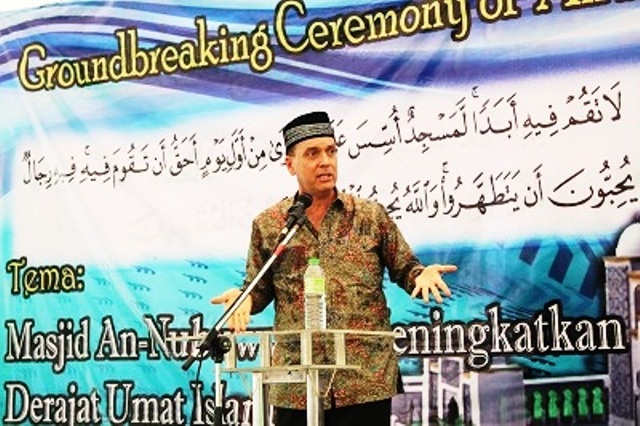


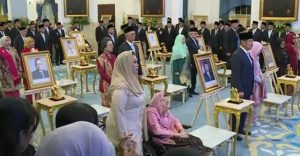
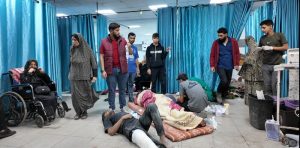
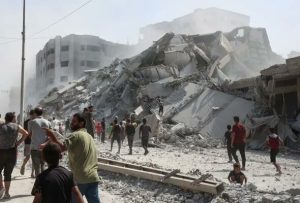


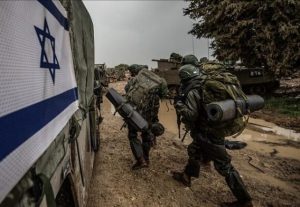
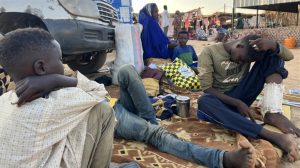
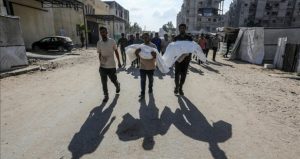
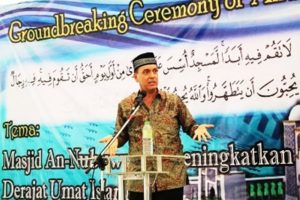



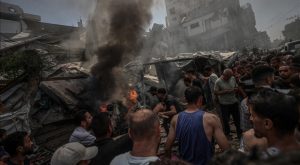
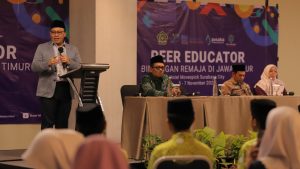
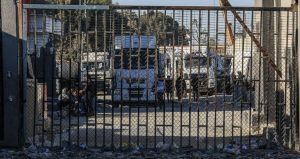

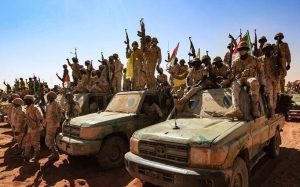
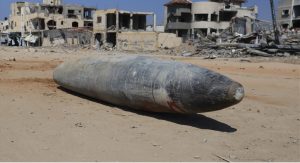
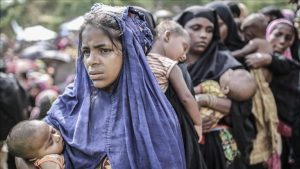
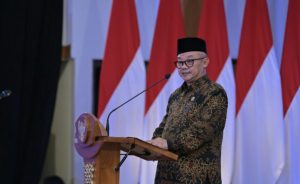





 Mina Indonesia
Mina Indonesia Mina Arabic
Mina Arabic